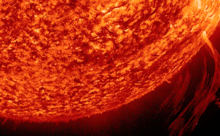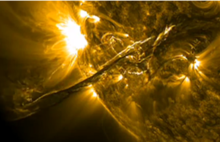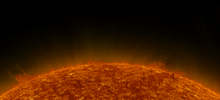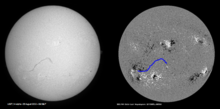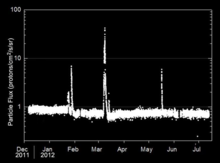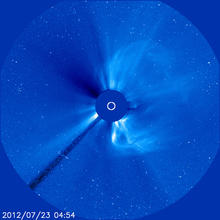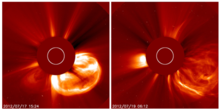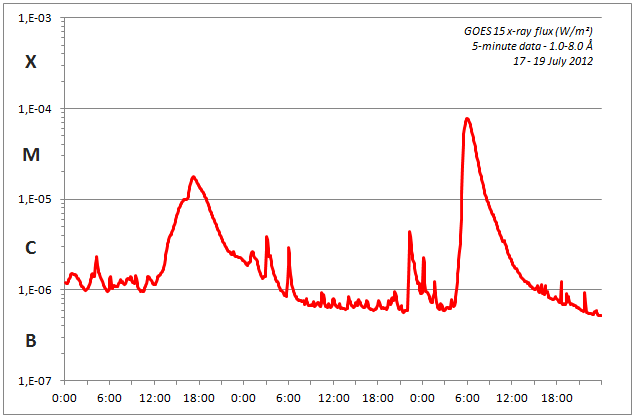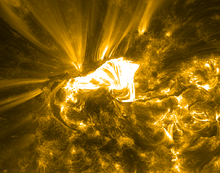Submitted on 2012-09-20
Filaments are clouds of cooler gas trapped between magnetic fields of opposite polarity. Seen in suitable filters, they look like dark lines and strands against the hotter solar disk. Near the limb, when their silhouette is observed, they glow as towering, torches, hedges and arches. They are then called prominences.
Filaments are clouds of cooler gas trapped between magnetic fields of opposite polarity. Seen in suitable filters, they look like dark lines and strands against the hotter solar disk. Near the limb, when their silhouette is observed, they glow as towering, torches, hedges and arches. They are then called prominences.

